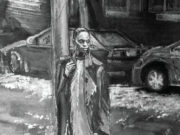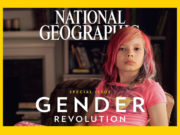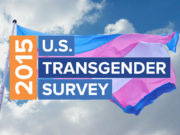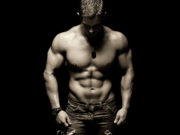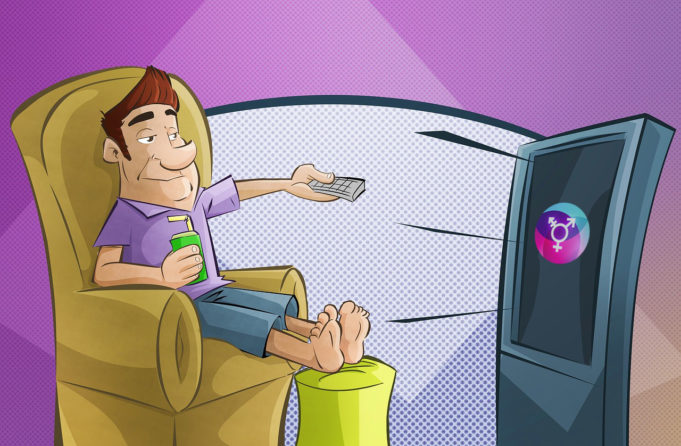The number of transgender characters on broadcast, cable, and streaming programs in the United States has more than doubled in the past year. A new report, published by GLAAD, has found that of the 278 regular and recurring LGBTQ characters, 16 are trans, representing 6%. In 2015 there were seven.
The most notable improvement came from the broadcast networks, which now include several transgender characters, all of which are played by transgender actors. Last year, transgender characters were excluded entirely.

The representation of the transgender community’s diversity, however, remains largely underwhelming. Of the 16 characters, eleven are white, four are African-American and one is Asian-American. There are at present no recurring Latinix characters. The diversity of other LGBTQ characters faired marginally better.

The poor representation of transgender diversity comes less than a month after the publication from the Williams Institute, the first of its kind, on race and ethnicity of the trans community in the United States. That report concluded transgender people are, in reality, among the most racially and ethnically diverse in the United States.
Ethnic and racial diversity was not the only glaring omission from mainstream media. Of the sixteen trans characters, 11 are straight, three are gay trans men and two are lesbian trans women. Trans men are also incredibly unrepresented. There are only four, three of which are gay.

In addition to a diversity deficiency, the actual storylines of transgender characters are in need of expansion. While an important part of trans identities, the “transition narrative” has become the status quo when including a trans character. GLAAD has called for the media to “move beyond the ‘transition narrative’” and offer trans characters more variance.
As an example, the upcoming CBS midseason legal drama Doubt will feature Laverne Cox as a successful attorney. CBS went one step further by hiring Imogen Binnie, author of the popular novel Nevada, to “help craft a realistic portrayal of the character.”
The influence that mainstream media has in shaping the narrative around trans people can not be understated.
While the number of people who now say they know someone who is transgender has also doubled between 2015 and 2016, that number still only accounts for about 30% of the population. The GLAAD study, meanwhile, found that 84% of Americans said that they “only learn about trans people through the images they see in the media.”
Nick Adams, the Director of GLAAD’s Transgender Media Program, hailed the rapid progress being made, but echoed the call for further inclusion: “It’s heartening that the number of trans characters has more than doubled since last year. Now, GLAAD really wants to see those characters become an integral part of the shows they’re on, with storylines that go beyond focusing on their trans identity and instead portray transgender people who are part of the fabric of everyday life.”
While cable and broadcast showed improvement on last year, streaming series from services such as Amazon and Netflix have remained the most inclusive. Only streaming services represented transgender characters in double-digit percentages.

The progress for transgender characters follows general upward trend in LGBTQ representation. This year marks the largest representation of LGBTQ characters in upcoming scripted programming, albeit at only 4.8 percent.
The success is soured, however, by the disturbing trend of killing off queer women. Lesbian characters plummeted from 33% to only 17% this year, following what GLADD called the “deadliest” year for lesbian and bisexual women on TV.
The report, Where we are on TV ’16 – ’17, is GLAAD’s annual report on LGBTQ inclusion. In addition to transgender representation in the media, the report covers the representation of all LGBTQ characters. Specific chapters are dedicated to African-American, Latinix, Asian-Pacific Islanders and Bisexual characters as well as LGBTQ characters with disabilities.





